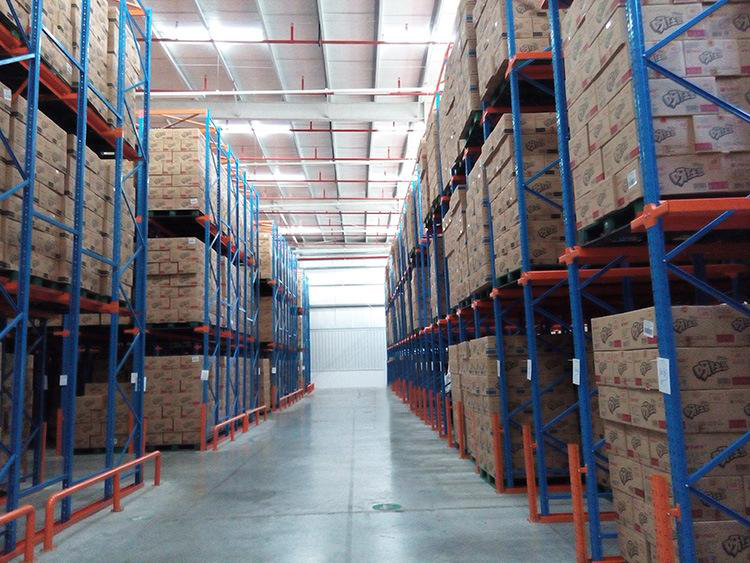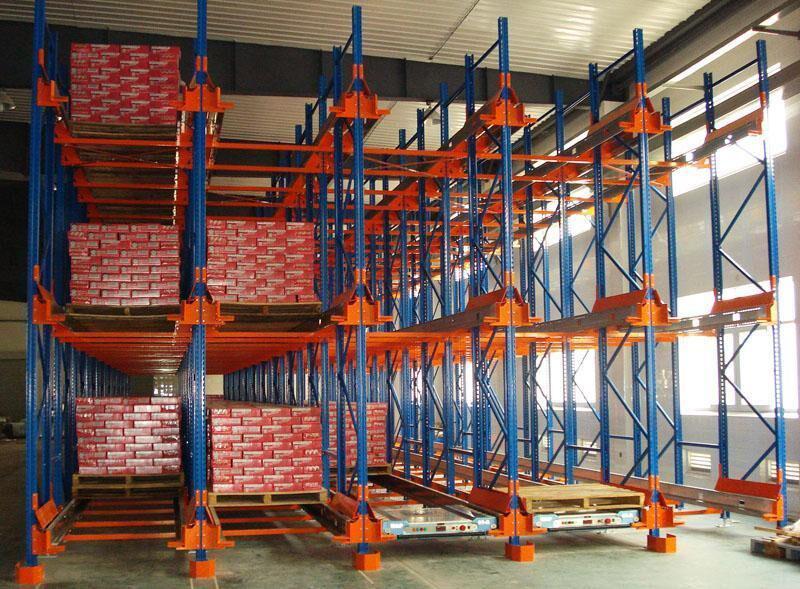In the relentless pursuit of efficiency, reliability, and scalability within data centers, server rooms, network closets, and even edge computing deployments, system racking stands as a fundamental, often underappreciated cornerstone. System racking refers to the organized framework – typically standardized metal enclosures – designed to securely house, power, cool, and manage servers, networking equipment, storage arrays, and other critical IT hardware. Implementing a robust system racking strategy is far more than just tidying up cables; it's a critical investment in the operational health and future readiness of your technology infrastructure. Let's delve into the seven essential benefits that make system racking indispensable.

1. Maximizing Space Utilization and Density
The most immediate and visible advantage of system racking is its ability to dramatically optimize physical space.
Vertical Stacking: Standardized rack units (U or RU) allow equipment to be securely mounted vertically within the rack enclosure. This leverages often underutilized vertical space, freeing up valuable floor area compared to having equipment scattered on desks or shelves. A single 42U rack can house dozens of servers and switches.
Standardized Footprints: System racking adheres to industry-standard widths (primarily 19 inches) and mounting hole patterns (EIA-310). This ensures compatibility across vendors and equipment types, allowing for predictable and efficient use of rack space.
High-Density Deployments: Modern system racking solutions, including specialized cabinets and accessories, are engineered to support high-density configurations, such as blade server chassis or multiple 1U servers packed tightly together. This is crucial for environments where physical space is at a premium, like colocation facilities or urban data centers.
Predictable Scaling: Knowing the U-height requirements of equipment allows IT managers to precisely plan future deployments within their existing system racking footprint, avoiding chaotic sprawl.
Proper system racking transforms chaotic equipment piles into organized, space-efficient deployments, directly impacting real estate costs and operational neatness.
2. Revolutionizing Cable Management
Chaotic cabling is a notorious source of downtime, cooling inefficiency, and troubleshooting nightmares. System racking provides the essential structure for taming this complexity.
Dedicated Pathways: Racks incorporate vertical and horizontal cable management channels, arms, and managers. These guide network, power, and KVM cables along defined paths, preventing tangles and strain on connectors.
Structured Organization: System racking enables the logical grouping and separation of different cable types (e.g., fiber, copper, power). This organization is critical for safety (preventing power/data interference) and simplifies tracing connections during maintenance or upgrades.
Improved Airflow: Organized cables, facilitated by system racking management solutions, significantly reduce obstructions within the rack. This allows cooling air to flow freely around equipment, preventing hot spots (covered more in benefit #3).
Enhanced Accessibility: Well-managed cables are easier to access, identify, and replace. This drastically reduces the time and risk involved in adding, moving, or changing equipment within the system racking environment.
Professionalism & Safety: Neat cabling not only looks professional but also minimizes tripping hazards, reduces the risk of accidental disconnections, and ensures compliance with safety standards.
Effective system racking is synonymous with effective cable management, forming the backbone of a reliable and maintainable infrastructure.
3. Optimizing Cooling and Thermal Management
Electronic equipment generates significant heat. Inadequate cooling leads to premature hardware failure, throttled performance, and unexpected downtime. System racking plays a pivotal role in thermal management.
Contained Airflow: Rack enclosures, especially with sealed side panels and front/rear doors (often perforated), help channel cooling airflow. The standard front-to-back airflow design of most servers aligns perfectly with system racking layouts that facilitate cool air intake at the front and hot air exhaust at the rear.
Preventing Recirculation: Proper system racking organization, combined with blanking panels installed in unused U-spaces, prevents hot exhaust air from recirculating back to the equipment intakes at the front of the rack. This "short-circuiting" is a major cause of overheating.
Integration with Cooling Systems: System racking layouts directly influence the effectiveness of room-level cooling (CRAC/CRAH units) and targeted solutions like in-row or rear-door heat exchangers. Organized racks allow for the creation of efficient hot aisle/cold aisle containment strategies.
Monitoring Points: Modern system racking often incorporates mounting points for environmental sensors (temperature, humidity) within the cabinet, providing granular data to manage cooling proactively.
Support for High-Density Cooling: Specialized racks are designed to accommodate integrated cooling solutions capable of handling the extreme heat loads generated by dense GPU clusters or high-performance computing gear.
Neglecting the thermal management aspects of system racking is a surefire path to reduced hardware lifespan and increased operational risk. Proper system racking is thermal management.

4. Enhancing Security and Physical Protection
Protecting valuable and sensitive IT equipment from unauthorized access and physical damage is paramount. System racking provides critical security layers.
Lockable Enclosures: Server racks and cabinets feature lockable front and rear doors, and often lockable side panels. This restricts physical access to equipment, ports, and cables, preventing tampering, theft, or accidental damage. Security levels range from simple key locks to sophisticated electronic access control systems integrated into the system racking.
Structural Integrity: Heavy-duty system racking is engineered to securely hold expensive and often heavy equipment (like large storage arrays or UPS systems), preventing accidental tipping or damage from vibrations or minor impacts. Stabilization kits further enhance this.
Controlled Environment: Enclosed cabinets offer a degree of protection from dust, spills, and other environmental contaminants that can damage sensitive electronics, especially important in non-data-center environments like industrial settings or offices.
Asset Tracking: The organized nature of system racking makes asset identification and tracking significantly easier, contributing to overall security and inventory management.
System racking transforms exposed equipment into a physically secured asset, mitigating significant operational and security risks.
5. Streamlining Maintenance, Serviceability, and Accessibility
Downtime is costly. System racking is designed to minimize it by making equipment easier to access, service, and replace.
Sliding Rails: Most servers and many storage devices are mounted on sliding rails within the system racking. This allows technicians to smoothly extend the equipment out of the rack for servicing (replacing drives, adding RAM, troubleshooting) without needing to fully remove it or disrupt surrounding gear.
Tool-Less Design: Many modern racks and mounting solutions feature tool-less installation and adjustment mechanisms, speeding up deployment and maintenance tasks.
Clear Labeling & Organization: The structured environment of system racking naturally lends itself to clear labeling of equipment, cables, and ports. This is invaluable during troubleshooting or when performing changes.
Rear Access: Proper system racking placement (not pushed against walls) and cabinets with removable rear doors provide essential access to the back of equipment for cable management, power supply replacement, and rear-panel connections.
Modular Component Replacement: When a component fails within a well-organized rack, identifying and replacing it is far quicker and less disruptive than in a tangled, non-racked environment.
System racking directly translates to faster mean-time-to-repair (MTTR), reduced maintenance costs, and higher overall system availability.
6. Ensuring Scalability and Future-Proofing
IT infrastructure is constantly evolving. System racking provides the flexible foundation needed to adapt and grow.
Modular Expansion: The standardized U-height system allows for incremental growth. New servers, switches, or other devices can be added into available rack space as needed, often without major reconfiguration. Additional racks can be added to the stack.
Adaptability: System racking solutions accommodate a vast array of equipment types and sizes, from shallow network switches to deep storage appliances and UPS systems, through adjustable mounting rails and versatile accessory options.
Support for Emerging Technologies: Well-designed system racking infrastructure can adapt to support new technologies, whether it's high-density GPU boxes for AI, specialized edge computing appliances, or new power distribution systems.
Simplified Migration: When upgrading equipment, having everything mounted in standard racks simplifies the physical swap-out process. The cabling infrastructure remains largely in place.
Consolidation: System racking facilitates the consolidation of distributed equipment into centralized, manageable locations, improving efficiency and manageability as the organization grows.
Investing in quality system racking is an investment in long-term infrastructure agility, preventing the need for costly rip-and-replace scenarios down the line.
7. Improving Power Distribution and Management
Delivering reliable, manageable, and monitored power to racked equipment is a critical function enabled by modern system racking.
Integrated Power Distribution Units (PDUs): Rack PDUs mount directly within the system racking, providing numerous outlets precisely where power is needed. This eliminates messy power strips and extension cords running across the floor.
Types of PDUs: System racking supports various PDU types:
Basic: Simple power strips.
Metered: Display aggregate power consumption at the PDU level.
Switched: Allow remote on/off control of individual outlets for power cycling.
Intelligent (Monitored): Provide per-outlet power monitoring, environmental sensing, and remote management via network interfaces.
Redundant Power Paths: System racking facilitates the implementation of redundant power feeds (A/B power) from separate sources, connected to equipment with dual power supplies via separate PDUs. This is essential for high availability.
Voltage Support: PDUs within system racking can be configured for standard (120V/208V) or high-voltage (230V/400V) operation, improving efficiency, especially for high-density deployments.
Cable Routing: PDUs mount vertically (0U) on the sides or horizontally (1U) within the rack, keeping power cables neatly managed alongside data cables within the system racking structure.
Effective power distribution, integral to modern system racking, ensures operational stability, enables energy monitoring, and supports critical redundancy requirements.
System racking is far more than just metal shelves for holding computers. It is the critical framework that enables the efficient, reliable, secure, scalable, and manageable operation of modern IT infrastructure. From maximizing valuable floor space and conquering cable chaos to ensuring optimal cooling, robust security, effortless maintenance, seamless scalability, and intelligent power delivery, the benefits of implementing a professional system racking solution are undeniable and pervasive.
Ignoring the principles of effective system racking leads to operational inefficiencies, increased downtime risks, higher cooling costs, security vulnerabilities, and significant challenges in managing growth. Whether you're setting up a small network closet, a corporate server room, or a large-scale data center, investing in the right system racking strategy – including quality cabinets, thoughtful layout, comprehensive cable management, and intelligent power distribution – is a fundamental step towards building a resilient, high-performing, and future-ready technology foundation. The organization, protection, and optimization provided by system racking are essential for any business relying on critical IT systems.







